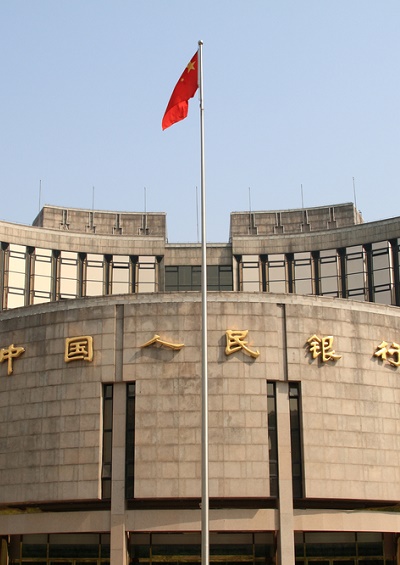China’s Coming Recession Will Lead to Considerable Unrest
Slow growth is already here after decades of economic expansion.
June 23, 2014

Eight years ago, the accounting firm Ernst & Young got in trouble with Chinese authorities for estimating the bad debts in the Chinese banking system at $911 billion. Since then, China’s bad loan problem has been swept under the rug.
But it may now be back with a vengeance. That has serious implications, both for China’s past — which the world has unquestioningly admired — and the future we can expect.
Since the Chinese government started pulling back on the banking system at the end of 2009, China’s shadow banking sector has grown exponentially. It has provided more than RMB 30 trillion ($4.8 trillion) of loans since 2007. Together with the banking system, loans have expanded by 87% of GDP since 2006, according to a recent report in the Financial Times.
That’s more than double the expansion in U.S. credit from 2002 to 2007, and indicates the potential for a severe crisis. More than 10,000 “local government financing vehicles” have been set up to circumvent local government borrowing limits. By the end of 2013, they held more than 31% of GDP in off-budget financing for local governments.
Killer statistic
Total debt in the Chinese economy has risen from 130% of GDP in 2008 to 220% of GDP in 2013, with assets in the formal and informal banking sector increasing from $10 trillion to $25 trillion.
That’s the killer statistic. For the rise in Chinese debt from 130% of GDP to 220% in only five years shows that debt has risen by 18% of GDP per annum beyond the increase in GDP during that period.
However, Chinese GDP growth has averaged only 8.9% in those five years. It therefore follows that growth in debt during the period was double the growth in real GDP. In other words, net of the increase in debt, China’s GDP in 2008-2013 shrank substantially.
Of course, some of that debt may be backed by real assets, and hence may represent a real increase in GDP. Indeed, if all the debt were solid, Chinese GDP would indeed have grown at 8.9% per annum, as officially stated.
However, we know from the anecdotal evidence of empty office buildings and superhighways that a very substantial percentage of that new debt is bad.
If 25% of the new debt is bad, then China’s real GDP growth in the last five years has been only half its stated level, or 4.5% per annum. If as much as half the new debt is bad, then China’s GDP growth in the last five years has been zero.
Grim prognostication
If one assumes that China’s bad debt losses will prove to be about three-eighths of the new loans put on since 2006, that would make China’s true annual growth in the last five years 2.2%.
It would also imply that the net bad debt loss to the Chinese banking and secondary banking systems will be about a third of reported 2013 GDP, or about $3.5 trillion.
If real Chinese growth in the last five years was only 2.2%, and there is a $3.5 trillion net overhang of bad debts waiting to take down the Chinese financial system and the country’s economy in general, then the prognostication for China going forward must be pretty grim.
Presumably, the majority of the funding needed to fill the $3.5 trillion hole in the financial system will come from the state, which can well afford it since China’s debt is still relatively low.
However, running an additional public sector deficit of 7% of GDP for five years, the probable period over which the hole would be filled in, would itself destabilize China’s public finances.
Of course, in principle it would be possible to raise taxes or cut other government spending to fill the gap, but doing so within what would almost certainly be an unpleasant recession would be very unpopular.
Shiny new Buicks
This suggests that the Chinese government will do as so many Western governments have done since 2008. It will print money and increase government debt to solve the problems of the financial system.
Sorting out the financial system’s hole will cause a substantial recession, for two reasons. First, since China’s true growth rate over the last five years has been only 2.2%, any substantial slowdown will push the economy into recession. Second, much of the bad debt will prove to be located in the consumer sector.
China’s automobile market of 18 million vehicles annually, for example, has been predicated on an artificially high GDP and level of prosperity. Hence, when recession hits and the air goes out of the economy, many consumers will find they cannot really afford the shiny new Buicks they have bought on credit, and loan defaults will occur.
In addition, wage levels have been rising rapidly in real terms in recent years. At least some of these rises will prove to have been built on sand, as companies can no longer afford to manufacture in China given the new higher costs. That suggests that there will thus be both unemployment and draconian wage cuts.
Foolishness and anger
Still, the outlook for China’s long-term future remains hopeful. But it’s likely to be at least a decade before its per capita GDP of around $10,000, as reported in 2013 in terms of purchasing power parity, is achieved in reality. Growth beyond that point will proceed at 5% rather than the recently reported 9-10%.
The unrest caused by such a growth hiatus, unexpected as it will be to a Chinese public used to three decades of rapid and almost uninterrupted progress, will be considerable.
Moreover, the prediction above represents something of a “best case” outcome. It assumes that the Chinese government does not disrupt the necessary restructuring progress by foolish policies, and that the Chinese public avoids a level of unrest which would cause a major disruption to economic life.
In practice, foolishness by the Chinese government and anger from the Chinese people are both rather likely.
The outlook for China is thus exceptionally clouded. If all goes well, the country will suffer a substantial recession and return by about 2024 to the level of living standards it thought it had achieved in 2013. However, the probability of a worse outcome is substantial indeed.
Takeaways
China's bad loan problem may now be back with a vengeance.
Total debt in the Chinese economy has risen from 130% of GDP in 2008 to 220% of GDP in 2013.
Taking into account bad debt losses, real Chinese GDP growth over the past five years may be only 2.2%.
In that case, any substantial slowdown will push the Chinese economy into recession.
If all goes well, China will only suffer a substantial recession. But the probability of a worse outcome is substantial.
Read previous

Africa as a Global Test Case
June 21, 2014